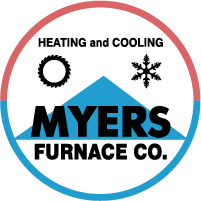When the weather begins to cool off, you might be thinking about how you’ll prepare your heating and cooling. After all, HVAC costs can add up to a significant chunk of your monthly electric bill. To figure out new ways to lower their HVAC bill, some owners look closely at their thermostat. Maybe there’s a setting they can use to boost efficiency?
Most thermostats come with a ‘Fan’ or ‘Fan On’ setting. But if the fan is going during a typical cycle, what does the fan setting offer for your HVAC system? This guide can help. We’ll share what exactly the fan setting is and when you can use it to save money during the summer or winter.
What Is the Fan Setting on My Thermostat?
For the majority of thermostats, the fan setting signifies that the air handler’s blower fan remains on. Certain furnaces may continue to generate heat at a low level in this setting, but in general heating or cooling isn’t being made. The ‘Auto’ setting, in contrast, will turn on the fan during a heating or cooling cycle and turn it off after the cycle is finished.
There are advantages and disadvantages to using the fan setting on your thermostat, and whether you do or don’t {will|can|should]] depend on your distinct comfort needs.
Advantages to switching to the Fan/On setting:
- You can keep the temperature in every room more uniform by allowing the fan to keep running.
- Indoor air quality should improve because constant airflow will keep passing airborne contaminants into the air filter.
- Fewer start-stop cycles for the blower fan helps lengthen its life span. As the air handler is typically connected to the furnace, this means you might prevent the need for furnace repair.
Drawbacks to using the Fan/On setting:
- A continuous fan can raise your energy costs somewhat.
- Nonstop airflow can clog your air filter soon, increasing the frequency you’ll need to replace it.
Should My Thermostat Be on? Fan or Auto in Each Season
In the summer, warm air may linger in unfinished spaces like the attic or an attached garage. If you use the fan setting, your HVAC system can draw this warm air into the rest of your home, compelling the HVAC system to work more to maintain the desired temperature. In severe heat, this could lead to needing AC repair more regularly as wear and tear grows.
The reverse can occur over the winter. Cooler spaces such as a basement will hold onto cooler air, which may eventually drift into the rest of your home. Leaving the fan running may pump more cold air upward, increasing the amount of heating you need to remain warm.
If you’re still trying to determine if you should switch to the fan/on setting, keep in mind that every home and family’s comfort needs are different. Leaving the HVAC system’s fan on might work for you if:
Someone in your household suffers from allergies. Allergies and other respiratory conditions can be stressful on the family. Leaving the fan on can help to enhance indoor air quality, helping your family breathe easier.
Your home has hot and cold spots. Many homes wrestle with stubborn hot and cold spots that quickly shift to a temperature different from the rest of the house. The fan setting can help minimize these changes by constantly refreshing each room’s ventilation.
